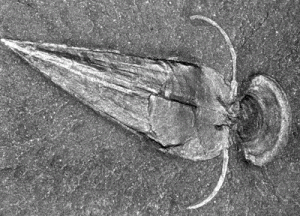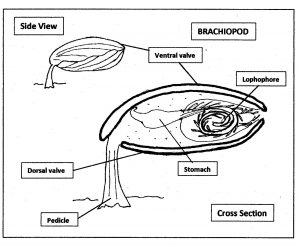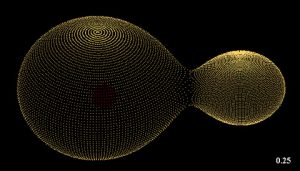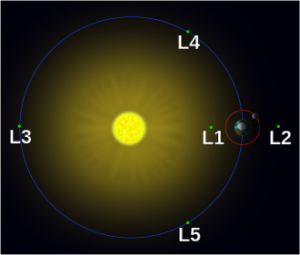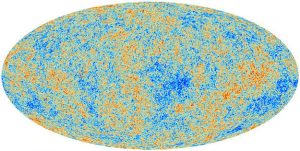Over the past two decades astronomers have had a field day discovering new planets orbits other stars within our galaxy. As of the beginning of 2017 more than 3500 extrasolar planets have been discovered, enough to give astronomers a good statistical sample of how many planets are out there, and what kind.

Those planet’s which orbit their star in the ‘habitable zone’ where liquid water can exist on their surface have received extra attention because of the possibility that life may exist on them. Such planets are neither too close to their star nor too distant and are often referred to as Goldilocks planets. Wolf 1061c is one such planet and at a distance of 13.8 light years it is one of the closest.
Astronomer Stephen Kane of San Francisco State University is presently conducting an extensive examination of Wolf 1061c to learn all we can with our present technologies while at the same time preparing for further studies as new instruments come on line.
The parent star of Wolf 1061c is a small red dwarf star whose energy output is only 0.15% that of our Sun. This means that the planet must orbit very close to it’s star in order to receive enough sunlight to warm it’s surface. The planet itself has a mass of an estimated 4.25 times that of our Earth so it may have a much stronger surface gravity.
Also, Wolf 1061c is the middle of three planets known to orbit Wolf 1061. All of them are believed to be rocky worlds more massive than Earth and because the entire Wolf system is so small the three planet’s gravities interact with each other making their orbits change considerably with time. Professor Kane warns that this could mean that the climate on Wolf 1061c may be quite chaotic. While none of this makes Wolf 1061c sound like a good spot for a vacation home you should remember that life is very adaptable and the inhabitants of Wolf 1061c might find our Earth to be unbearably dull.
Professor Kane hopes to learn even more about Wolf 1061c when the new James Webb space telescope is launched in October of next year (2018). The examination of nearby extrasolar planets is one of the jobs the Webb telescope was designed to carry out so we should soon know even more about Wolf 1061c. The last two decades have been very interesting times for the planet hunters and let’s hope that the next two decades are even more exciting. To learn more about Professor Kane’s work the link below will take you to San Francisco State University’s news story about Professor Kane.
http://news.sfsu.edu/news-story/sf-state-astronomer-searches-signs-life-wolf-1061-exoplanet

